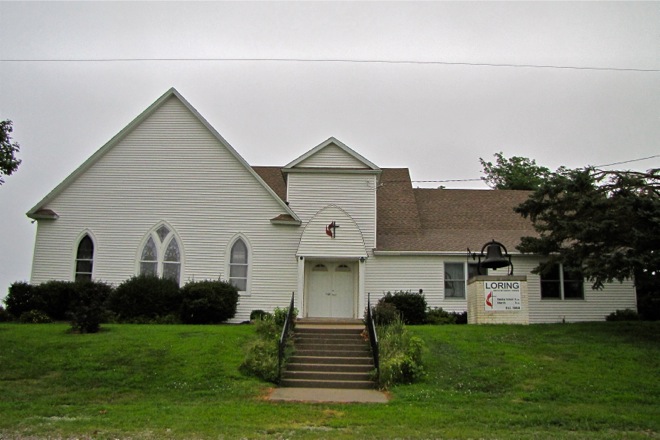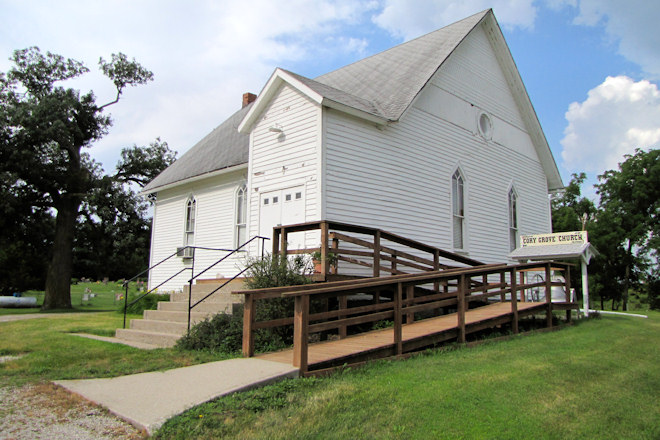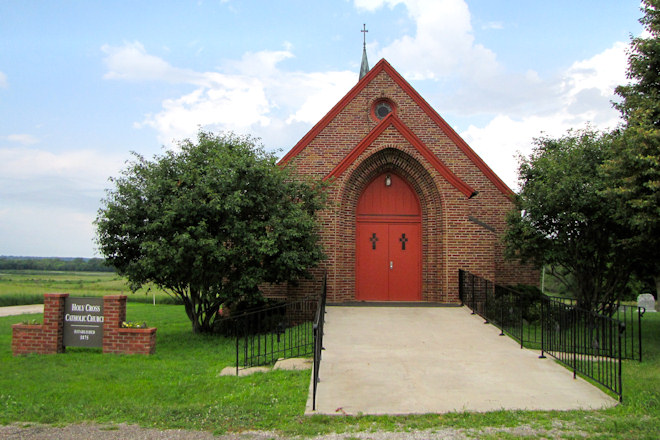
Located four-and-a-half miles southwest of Maxwell, the Loring United Methodist Church can trace its roots to 1863, when J.T. Overholt and family came to the community from the Evangelical Association in Ohio. Worship soon began in homes, with services later moved to local schoolhouses. A dedicated building was constructed and dedicated in July 1885, with membership exceeding 150 by 1892.
The first church was destroyed by tornado in 1907, but was rebuilt by December 22, the same year. The building remains, and the church continues to serve area residents, today.

The Cory Grove Community Church is located two miles east of Elkhart in rural Polk County, where a community of settlers once lived. Isaac Cory, the area’s first settler, not only was the namesake for the town but also was the minister of the town’s first church. Little is known about the church’s early history except that it was established in 1848, and the current church building was constructed in 1897. After several years of inactivity, the non-demoninational Cory Grove Community Church resumed services in 1945. A cemetery is adjacent to the church, which has worship services weekly at 10:30.

In 1876, Bill Ryan deeded four acres of land in rural Polk County for a Catholic church and cemetery. The first wood frame church was constructed shortly after, with the name Holy Cross chosen in honor of Ryan’s childhood parish in Ireland. The original church burned to the ground on October 22, 1927. Though the church hierarchy did not plan to rebuild Holy Cross, the congregation came together to lead the reconstruction effort.
The current brick structure was designed by Des Moines-based architect John Normille. He based his design on village churches he had seen overseas; in fact, the spire, the entrance, the beamed ceiling, and the roof trusses in the nave are all from Europe, while the altar was shipped from Ireland. The church building was dedicated in 1929.
Featuring a new Iowa photo each weekday; dedicated to discovering and documenting the best of small-town Iowa.


